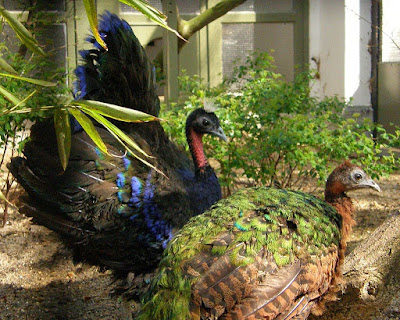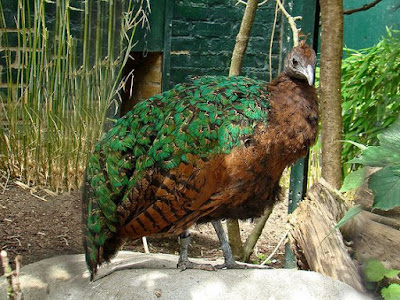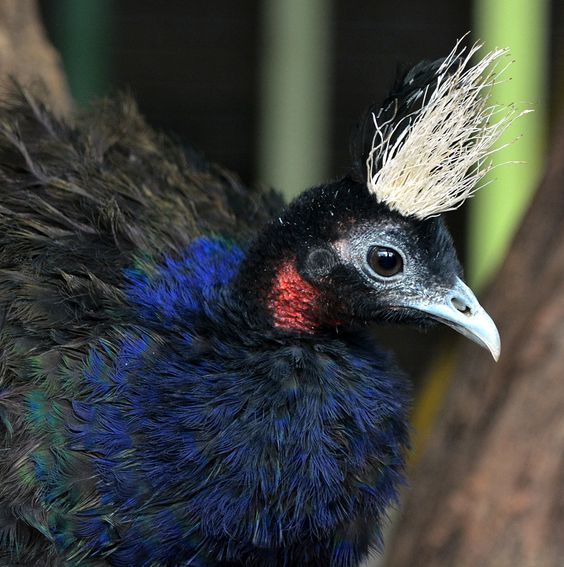The Congo peafowl is related to the peacock of India and
Asia, but looks very different. It’s smaller, and lacks the enormous fan tail
of the peacock, but you can see the similar head, neck and beak, and the male
sports a crest on its head. These rare birds are only found in forests in the
Democratic Republic of the Congo, not far from the equally rare okapi.
Size
Height: 60-70 cm long
Weight: 1-1, 2 kg.
Habitat
This species is endemic to the Democratic Republic of Congo.
It prefers tropical and subtropical rainforests up to 1200 meters high,
although generally picking drier habitats at higher altitudes. However and due
to the intensification of croplands and jungle destruction, it is increasingly
more common among crops and artificial clearings created by deforestation.
Life Span
Up to 20 years
Breeding
The breeding season of the Congo peafowl is variable,
depending on local rainfall conditions. They are monogamous, apparently living
in small family groups, and nest in a scrape or hollow in the ground. The
female lays 2-4 eggs, which she incubates alone for 27-28 days. The chicks are
precocious and leave the nest soon after hatching, but the parents take care of
them for several weeks.
Identification
Male
- Dark blue plumage, tinged with metallic green and violet
- Bare red skin on neck
- 14 feathers in black tail
- Vertical, long white feathers on crown
- Grey feet

Female
- Chestnut-brown below
- Chestnut-brown breast and forehead
- Metallic green back
- Black belly
- Short chestnut brown crest
Diet and Behavior
Like members of the genus Pavo, the Congo peafowl are
omnivores with a diet consisting mainly of fruits and insects. In Salonga
National Park, its diet is taxonomically narrower in secondary forest than in
primary forest. The male has a similar display to that of other species of
peafowl, though the Congo peacock actually fans its tail feathers while other
peacocks fan their upper tail covert feathers. The Congo peafowl is monogamous,
though detailed mating information from the wild is still needed. The peacock
of the species has a high-pitched "gowe" calling noise while the
peahen emits a low "gowah". They have loud duets consisting of
"rro-ho-ho-o-a" from both sexes.
Reproduction
The first young start to be spotted between January and
February, suggesting that incubation must occur in September and October, with
an approximate duration of 25 to 28 days, and laying two or three eggs. The
nest-–generally located close to ground in a tree or bush—is constructed first
by the female during laying season and first days of incubation, and then taken
over by the male for the rest of the process.


















No comments:
Post a Comment